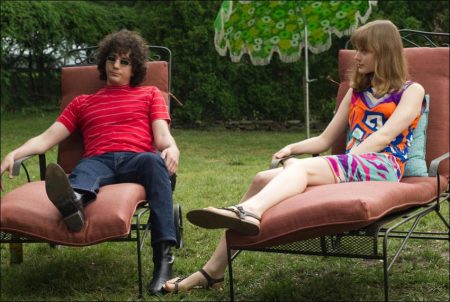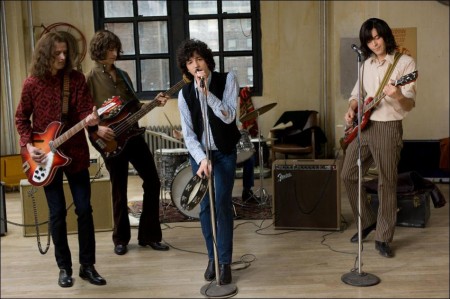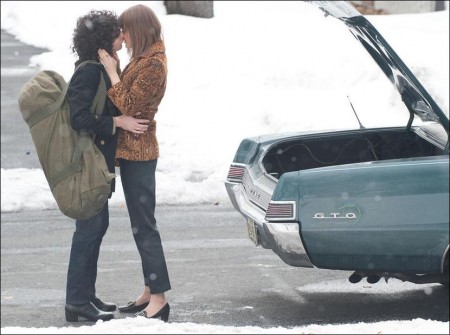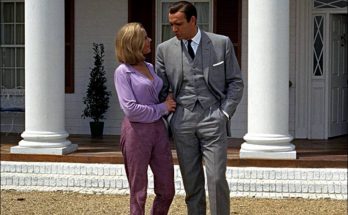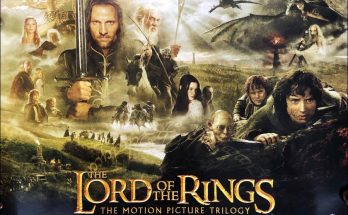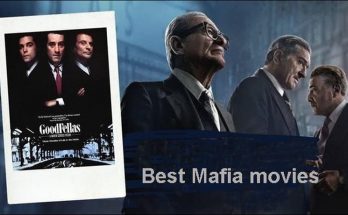When the mode of the music changes, the walls of the city shake” — Plato
“I Can’t Get No Satisfaction” — The Rolling Stones
Not Fade Away, David Chase’s deeply felt love letter to the music of the Sixties, is a film about dreams that come true — and the ones that never do. For Chase, “It’s about anybody who has ever had a dream and about what it takes to actually realize that dream. Rock & roll is at the heart of the movie because for some of the characters, rock music is the gateway to transcendence, but it doesn’t end there.”
Traditionally, most rock & roll movies have focused on the agony and ecstasy of “making it” on a grand scale, usually with thousands of fans screaming in the background. As a rule, we witness some band of brothers’ rise and fall, then their crash and burn, and perhaps the eventual resurrection. As one might expect from a man best known as the creator of the groundbreaking television series The Sopranos, Not Fade Away is not your average rock & roll movie. Instead, this is an intimate, powerful, alternately painful and funny drama about coming of age and the sort of indelible memories — musical and otherwise — that end up making us who we are.
About the Production
In a sense, Not Fade Away could be considered very long in development – arguably most of David Chase’s life.
“Throughout the whole production process, I kept telling David how autobiographical his film is and he kept denying it, but the evidence might suggest otherwise,” says Executive Producer Mark Johnson. “I do remember when David was shooting a scene with James Gandolfini as the father of our lead character confronting his son, I asked David, `So did your father ever say, “You and I, we are going to tangle my friend?” and David just said “All the time” and smiled.’
“It’s not an autobiography,” Chase says. “But it’s suggested by the way I felt at the time, and my loves and hates at the time, but not incidents per se. I started writing a primitive version of this screenplay 25 or 30 years ago, but I only got eight or nine pages into it. So I had the idea for a long time, but not many pages. So I really only started writing this movie after The Sopranos.”
According to Johnson, “It was always clear this movie was very important and personal for David, as most great films are. There was no sense, of “Well, The Sopranos is over, so I guess I should make a movie now. This was very clearly a story David has wanted to tell. It’s David’s first feature so this was a chance to do something he’s really passionate about. I believe this is something he had to write. The first script I read was significantly different, but even then something about it reminded me of the first film I ever was the Executive Producer on – DINER by Barry Levinson. In a different way, this had that same sense of a very talented man revisiting the time and place that shaped him.”
Not Fade Away was shot over sixty days in New York State and later California. “This is a period film that takes place over nine years, and a period piece like this one can be so difficult, becuase you have to change all the cars, all the meters, the stop signs,” says Johnson. “David has remarkable attention to detail and a tremendous concern for realism, so it was very important for him to get things right, especially the music that had to be exact to the period.
He wanted the music to be totally true to when the guys in our story would hear things and be influenced by them. Some of the music David wanted was indicated in the script, but he kept thinking and improving everything. And thanks to the power of David and Steven Van Zandt, and the music team at Paramount, we were able to get what we wanted.”
The casting process for NOT FADE AWAY was unusually long and intense for a number of reasons. “Casting went on for a long time because we were looking for a lot of relatively new talent and because of the musical demands of some of the roles,” Johnson explains. “Normally the casting process would be eight to ten weeks – but for us it took about six months. We were casting a lot of unfamiliar faces and it took time to get it all right. We were literally and figuratively putting a band together. And we kept looking – we had to see John Magaro a second time before it was clear he was the man to play our lead.”
With casting finally complete, the production of NOT FADE AWAY now faced a few more significant challenges. One was weather, since the storyline required both snowy and summery scenes. “We needed snow and we needed sun, and thankfully we got both,” says Johnson. Interestingly, another major concern for the film was hair. “Funnily enough, hair was a major issue. The hairstyles were changing so much in the era we were covering and we need it all to appear believable. I’ve seen period movies that fall apart over such things, but fortunately, I think due first and foremost to David’s great attention to detail, he was able to capture the times in every way here.”
Johnson says that filming Not Fade Away with David Chase was made much easier by the fact that he was uniquely experienced and knowledgeable. “You have to remember David is not a first time director — he’s a first time feature director. He directed a couple of the greatest hours of television ever, and television that was truly cinematic too. It was very clear that he knew what he was doing.”
“Directing this movie was a learning experience, and I think that never stops,” says Chase. “I remember seeing Akira Kurosawa getting an Oscar lifetime achievement award, and he said the great thing about filmmaking is that you’re always learning. And he was in his Eighties and a genius. So I think it’s safe to say I learned a lot making this movie.”
Similarly, Johnson says that Chase clearly had a remarkable ability to inspire and work with actors. “Our mostly young cast rose to the challenges and didn’t seem too thrown to be working with David Chase who clearly has an eye for great actors,” says Johnson. “Maybe some of them were too young to fully realize what an opportunity this was for them. And I have to say as a fan of THE SOPRANOS, to see David working with James Gandolfini again and thinking about the character they created together was amazing too.”
According to Johnson, editing was another intense part of the creative process. “We had almost too much of a good thing,” he explains. “David brought so many interesting and indelible characters to the screen, you wanted to keep following all of them. But in the end, you have to find your story to tell, and in the end, David found a great and meaningful one – to him and to all of us.”
Asked if there’s anything else at all that he would like people to know before they see Not Fade Away, David Chase thinks for a moment and then recalls a statement by famed music producer Brian Eno on the Daniel Lanois album and film “Here Is What It Is” that has stayed with him. “Eno said, `What would be really interesting is to see how beautiful things grow out of shit, because nobody ever believes that. Everybody thinks that Beethoven had his string quartets completely in his head-they’d somehow appeared there and formed in his head… and all he had to do was write them down and they would kind of be manifest to the world. But I think what’s so interesting, and what would really be a lesson that everybody should learn is that things come out of nothing.'”
Not Fade Away
Directed by: David Chase
Starring: Bella Heathcote, John Magaro, Jack Huston, Will Brill, James Gandolfini, Dominique McElligott, Molly Price
Screenplay by: David Chase
Production Design by: Ford Wheeler
Cinematography by: Eigil Bryld
Film Editing by: Sidney Wolinsky
Costume Design by: Catherine Marie Thomas
Set Decoration by: Cherish M. Hale
MPAA Rating: R for pervasive language, some drug use and sexual content.
Studio: Paramount Vantage
Release Date: December 21, 2012
Related Link: View the Full Production Notes for Not Fade Away
Views: 53
